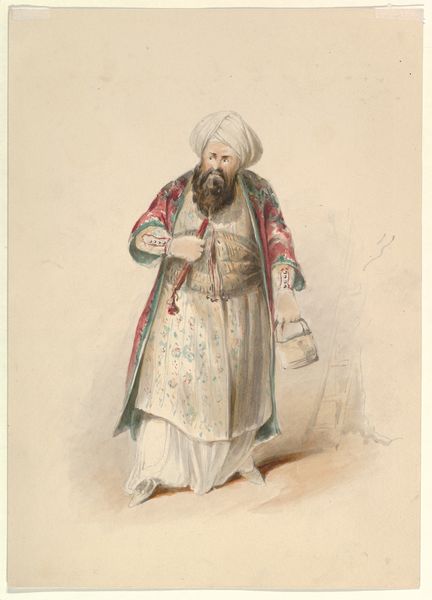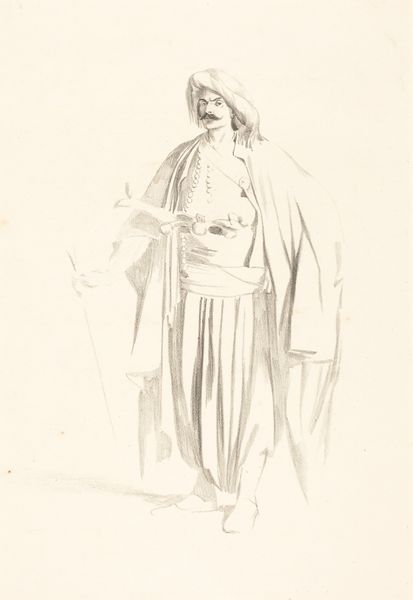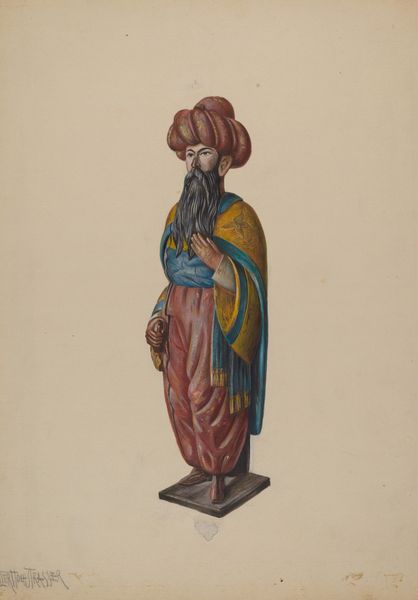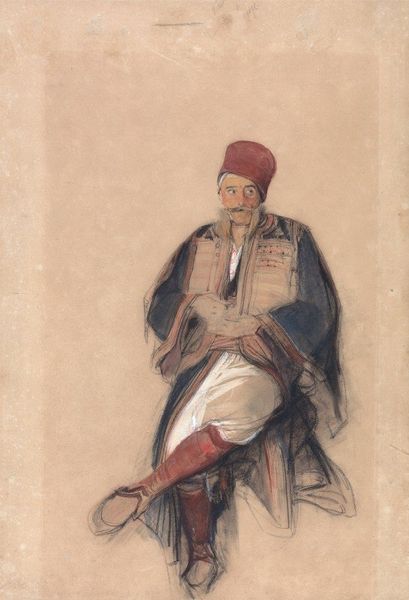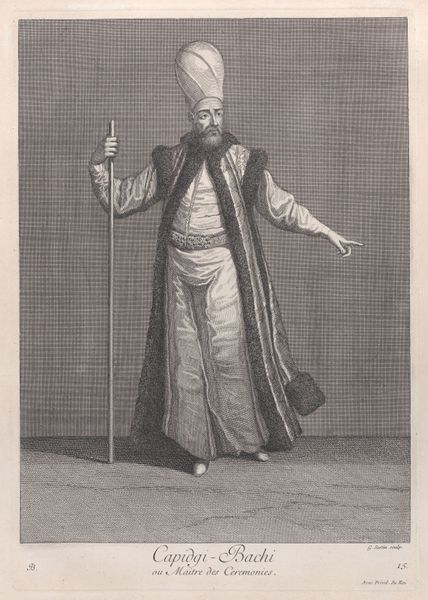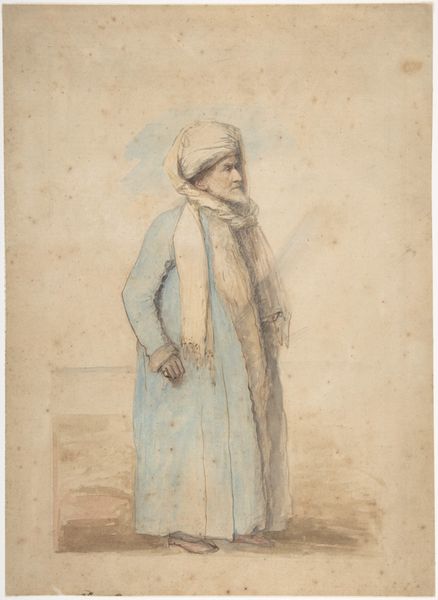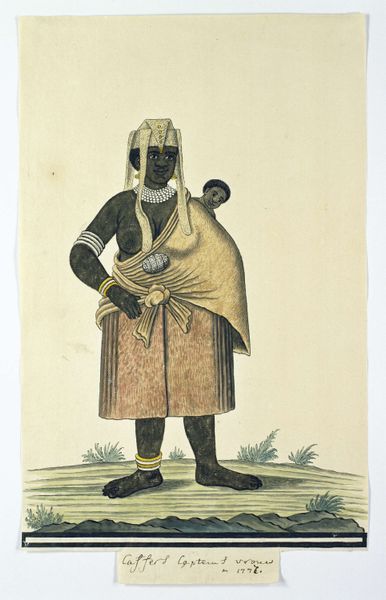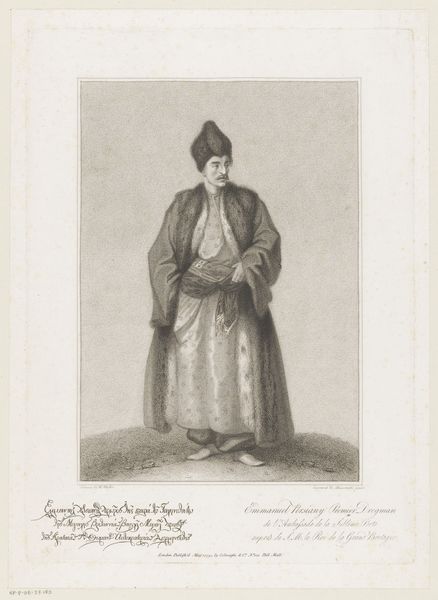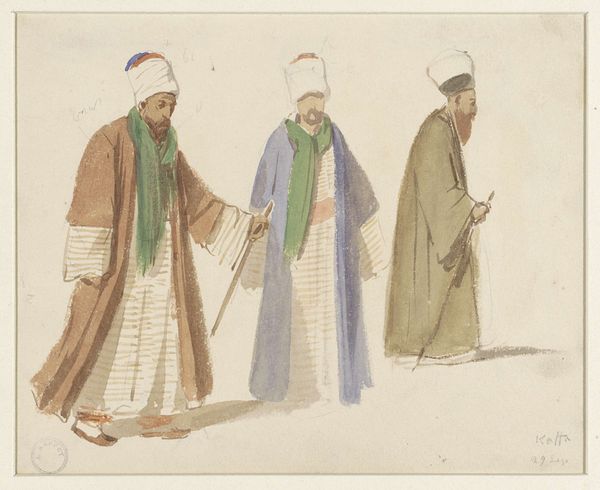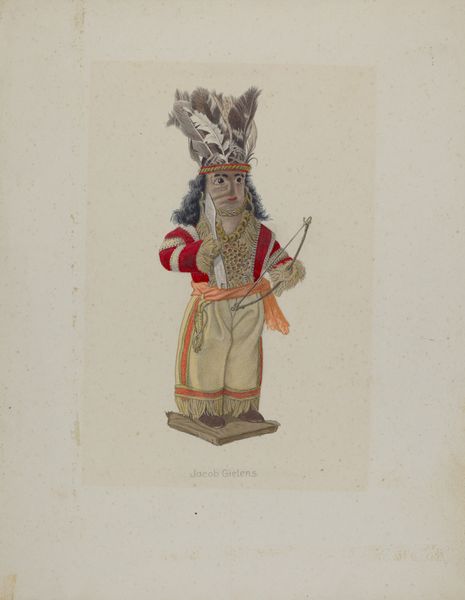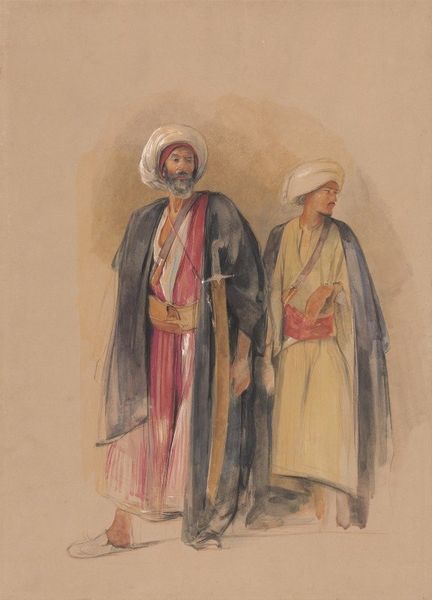
Costume Study for Bassa Selim in the "Abduction from the Seraglio" by W.A. Mozart 1825 - 1835
0:00
0:00
drawing, print, gouache, watercolor
#
portrait
#
gouache
#
drawing
#
water colours
# print
#
gouache
#
figuration
#
watercolor
#
underpainting
#
romanticism
#
orientalism
#
costume
Dimensions: Sheet: 11 1/4 x 7 7/8 in. (28.5 x 20 cm)
Copyright: Public Domain
Curator: What a magnificent character study. I'm drawn to the meticulous detail, a veritable compendium of cultural signifiers rendered in watercolour and gouache. Editor: It has an undeniable exotic flair, a dreamlike quality. I immediately notice the theatricality of the gesture, the costume itself – rich in implied narratives. Who exactly is this figure? Curator: We're looking at Johann Georg Christoph Fries's "Costume Study for Bassa Selim in the 'Abduction from the Seraglio' by W.A. Mozart," created sometime between 1825 and 1835. This piece, now housed at The Met, offers a glimpse into the visual world surrounding Mozart's opera. Editor: Ah, so a product of its time and its socio-cultural milieu. It exemplifies orientalism. But the costume is so... vibrant, isn't it? Almost jarring in contrast to the man’s sombre face. It’s quite the paradox. What’s the psychological weight behind these design choices? Curator: Precisely! It invites an intriguing study. Notice the detail in the turban, the slight droop in the plume… It echoes traditional leadership regalia. Bassa Selim is presented as an exotic 'other', the 'oriental' ruler. Editor: And the dagger, casually tucked into his sash, acts as a clear visual signifier for potential menace, right? But at the same time, he strikes a somewhat elegant, theatrical pose. It highlights the performance, the opera, as a cultural spectacle itself. What could the original audiences of Mozart's work make of that image, a figure caught between brutality and gentility? Curator: The symbols here reveal a Western fascination with, and simultaneous othering of, the East. His robes, the turban—all coalesce to define the oriental. These are symbols not just of power, but of cultural difference. Editor: I find the costume a curious paradox, though: elaborate and exquisite, yet perhaps imprisoning its wearer within the confines of a stereotype. This representation of Bassa Selim reflects power dynamics of 19th-century Europe. It showcases art’s critical role in reflecting society, consciously or not. Curator: Indeed, a costume speaks volumes, it represents layers upon layers of symbolic messaging through its color and design, shaping an identity in the cultural memory of its viewer. Editor: Absolutely, this Fries study offers a rich glimpse into the complexities of cultural projection. Thank you, Johann Georg Christoph Fries, for the layers upon layers.
Comments
No comments
Be the first to comment and join the conversation on the ultimate creative platform.
